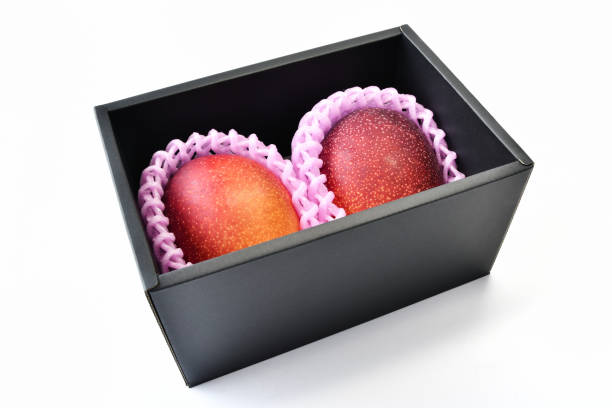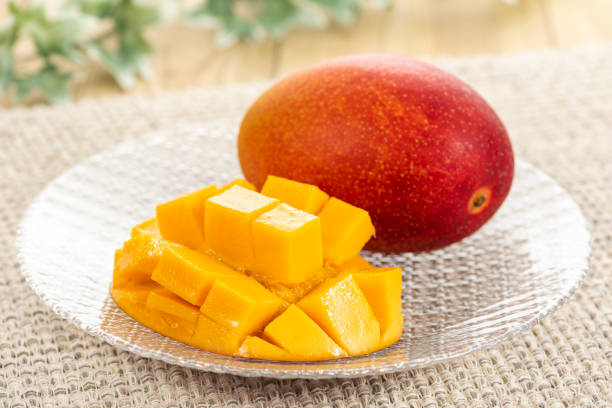
When it comes to tropical fruits, few have the luxury and prestige of the Miyazaki mango. Known as the “king of mangoes,” this variety of mango from Japan has earned a reputation for its incredible sweetness, smooth texture, and unique flavor profile. With a price tag that can reach into the hundreds of dollars per fruit, Miyazaki mangoes are not just a fruit—they’re a luxury experience.
But what exactly makes these mangoes so special, and why are they so highly sought after? Let’s explore the journey of the Miyazaki mango, its characteristics, and what makes it a highly coveted delicacy.
What is a Miyazaki Mango?
The Miyazaki mango, also known as “Egg of the Sun” (日の丸マンゴー, or Hinomaru mango), is a variety of Kensington Pride mango that originates from the Miyazaki Prefecture on the island of Kyushu in Japan. These mangoes are grown with meticulous care and attention, making them one of the most luxurious fruits in the world.
Miyazaki mangoes are known for their vibrant red and orange skin, which is indicative of their ripeness. They are typically much larger than the common varieties of mangoes, weighing in at around 350-500 grams each (about 12-18 ounces), and they boast a perfectly smooth, tender flesh with a minimal fiber content.
The Characteristics of Miyazaki Mangoes
Miyazaki mangoes are revered for their exceptional sweetness and rich, tropical flavor. Here are a few key characteristics that make them stand out:
- Unparalleled Sweetness: One of the most important qualities of Miyazaki mangoes is their sweetness. These mangoes are known to have a Brix level (a measurement of sweetness) that exceeds 15, which is considered extraordinarily high for mangoes. To put this into perspective, most commercially available mangoes have a Brix level of around 12-14. This means the flavor is intensely sweet and honey-like, often compared to candy.
- Texture: The flesh of a Miyazaki mango is smooth, buttery, and soft, with almost no fibrous strings, making it a joy to eat. The texture is often described as creamy, and the mango’s flesh has a consistency similar to a velvety custard.
- Appearance: Miyazaki mangoes are also known for their flawless appearance. They are carefully cultivated to ensure they have a symmetrical, rounded shape with no blemishes. The deep, rich red and orange hues of the skin are a hallmark of their ripeness, and many even come with a shiny finish that makes them look almost like a polished gem.
- Size: These mangoes are significantly larger than typical mangoes, with some reaching up to 1.5 times the size of a standard mango. A single Miyazaki mango can weigh between 350 grams and 500 grams, making it an impressive fruit to behold.
How Are Miyazaki Mangoes Grown?
The cultivation of Miyazaki mangoes is a labor-intensive process that involves strict attention to detail and a great deal of care. Here’s a look at how these luxurious mangoes are grown:
- Ideal Growing Conditions: Miyazaki mangoes are grown in the subtropical climate of Miyazaki Prefecture, which boasts warm, sunny weather and ideal conditions for growing mangoes. The combination of the region’s fertile soil, abundant sunshine, and consistent rainfall contributes to the development of the mangoes’ rich flavor.
- Hand Pollination and Pruning: Miyazaki mango trees are carefully tended to by farmers who hand-pollinate the flowers to ensure high-quality fruit. The trees are pruned to allow maximum sunlight to reach the mangoes, which is critical for developing their sweet flavor.
- Controlled Environment: Some growers even go as far as controlling the temperature and humidity around the mangoes to ensure they ripen at the perfect time. The mangoes are often grown in greenhouses to protect them from harsh weather and to regulate the environment.
- Special Harvesting Practices: Each mango is harvested at the peak of ripeness, and many are hand-selected to ensure only the highest-quality fruits are sold. To maximize the flavor and sweetness, the fruit is carefully handled and allowed to ripen in controlled environments.
Why Are Miyazaki Mangoes So Expensive?
Miyazaki mangoes can command astronomical prices, with some fruits selling for as much as $100 or more per mango, particularly during the peak season. Here’s why:
- Labor-Intensive Cultivation: As mentioned earlier, the cultivation of Miyazaki mangoes involves careful, meticulous farming practices, such as hand-pollination, pruning, and temperature control. The mangoes are grown in small quantities, with the focus being on quality rather than mass production.
- Limited Availability: Miyazaki mangoes are only grown in Miyazaki Prefecture, and they are produced in limited numbers. The labor-intensive processes and small production yields create scarcity, which drives up the price.
- Luxury Appeal: Miyazaki mangoes are often given as gifts or used in special occasions due to their luxurious nature. They are marketed as a high-end product, making them an attractive option for those seeking unique or premium gifts. The high price point contributes to the perception of exclusivity.
- Award-Winning Fruits: Some of the finest Miyazaki mangoes are awarded prestigious accolades, which further elevate their desirability. For example, certain fruits are sold in auctions where they can fetch extremely high prices, sometimes reaching several hundred dollars for a single fruit.
How Are Miyazaki Mangoes Enjoyed?
Given their luxury status, Miyazaki mangoes are often enjoyed in ways that highlight their natural flavor and texture:
- Fresh and Pure: The most common way to enjoy Miyazaki mangoes is by simply cutting them open and eating them fresh. Their rich, sweet flavor and smooth texture are best appreciated on their own.
- Mango Desserts: Many people incorporate Miyazaki mangoes into desserts, such as mango parfaits, mango sorbets, or mango-flavored cakes and pastries. Their sweetness and smooth texture make them a perfect addition to indulgent treats.
- Mango Sashimi: In Japan, it’s not uncommon to see Miyazaki mangoes sliced thinly and served as a luxurious sashimi-style dish, where the mango is the star of the show.
- Mango Smoothies and Juices: Some people opt to blend the fruit into smoothies or juices, though doing so might slightly mask the mango’s rich, unique flavor. However, many luxury hotels and restaurants serve fresh Miyazaki mango juice or smoothies as a special offering.
Where to Buy Miyazaki Mangoes
Miyazaki mangoes are most readily available in Japan, but they are also exported to high-end grocery stores and specialty markets around the world. Due to their luxury status, they are often sold in premium packaging, sometimes accompanied by a certificate of authenticity.
In countries like the U.S. and Australia, you can find Miyazaki mangoes at select international markets, particularly in larger cities with a strong demand for exotic fruits. They are often sold during peak mango season, which typically runs from April to August.

The King of Mangoes
The Miyazaki mango is much more than just a fruit—it’s a luxury experience, a symbol of quality, and a testament to the care and dedication of its growers. With its rich sweetness, velvety texture, and unique flavor profile, it has earned its title as the “king of mangoes.” Whether enjoyed as a standalone treat or incorporated into special desserts, the Miyazaki mango is a rare indulgence that exemplifies the heights that fruit cultivation can reach.

